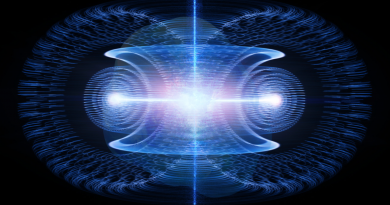Light Saber Physics (Star Wars) Part 1
The physics of a lightsaber—though fictional—can be explored by imagining a combination of principles related to plasma, heat, magnetic fields, and energy fields. Here’s an analysis of key aspects such as heat, speed, and force fields, along with the speculative physics behind them.
1. Heat and Energy
A lightsaber blade is often depicted as incredibly hot, cutting through metal and enemies with ease.
- Material Melting: If the lightsaber can melt through thick metal (as seen in Star Wars), it would have to be thousands of degrees Celsius—at least comparable to welding arcs (~6000°C) or plasma torches.
- Radiative Heating: Such a blade would emit a large amount of infrared radiation. Yet, characters holding them show no signs of burns or heat effects, which suggests:
- Localized Energy Containment: The energy and heat might be confined through force fields or magnetic bottle-like containment, preventing heat from spreading.
2. Speed and Blade Length Control
The lightsaber blade ignites instantly, suggesting that whatever mechanism powers it creates the energy field extremely fast.
- Blade Creation: One theory involves plasma (high-energy ionized gas) shaped and contained within a powerful magnetic field. Plasma moves at speeds near 10,000–100,000 m/s, which fits the fast ignition.
- Length Limitation: The lightsaber blade length seems to stop abruptly, which may involve:
- Electromagnetic containment fields that prevent the plasma from expanding further.
- Beam Energy Cutoff at a precise point using carefully controlled resonant energy feedback.
3. Force Field and Containment Mechanism
A lightsaber’s blade doesn’t just act like a beam of light—it has mass and can block other blades, which suggests it is more than just pure energy. This leads to a few theories:
- Magnetic Confinement Fields: Similar to tokamak reactors, magnetic fields could be used to keep the plasma contained in a cylindrical shape.
- Solid-Light or Plasma Core: The blade might behave like a force field-encased plasma, giving it solidity and the ability to block other lightsabers.
- Repulsive Interactions: When two lightsaber blades meet, they don’t pass through one another but resist—indicating some electromagnetic or exotic energy interactions.
4. Force and Momentum Transfer
Lightsabers can deliver momentum when swung, and their impact has real physical effects, indicating the blade has some mass or force.
- Energy Mass: The plasma core may have enough energy density that it behaves as if it has effective mass, enabling forceful impacts.
- Feedback Through the Handle: Swinging the lightsaber would require the hilt to counteract feedback forces, likely necessitating advanced gyroscopic stabilizers or energy converters.
5. Power Source and Efficiency
The power source must be compact yet capable of generating vast amounts of energy. The kyber crystal (in Star Wars canon) is said to amplify energy, potentially allowing:
- High-density energy storage similar to fusion reactors.
- Minimal Energy Loss: Advanced technology might prevent energy loss to the environment, unlike conventional plasma systems.
Summary
- A lightsaber can be thought of as a plasma blade confined by magnetic or force fields, maintaining extreme temperatures while preventing unwanted heat dissipation.
- The blade is fast to ignite, likely due to rapid plasma discharge or energy field projection.
- Interactions between blades involve magnetic or electromagnetic field repulsion, explaining their solidity.
- The power source must provide continuous high energy, likely through fusion-level efficiency or exotic materials.
Lightsabers, while beyond the capabilities of modern technology, could theoretically align with principles of plasma physics, magnetic fields, and force field containment—all of which are areas under active research today.

Light Saber Physics (Star Wars) Part 2
Force Field Dynamics The concept of force fields appears often in science fiction, but in physics, we can explore it

Light Saber Physics (Star Wars) Part 3
Light Saber Physics, Real World Plasma Containment Vs Star Wars
